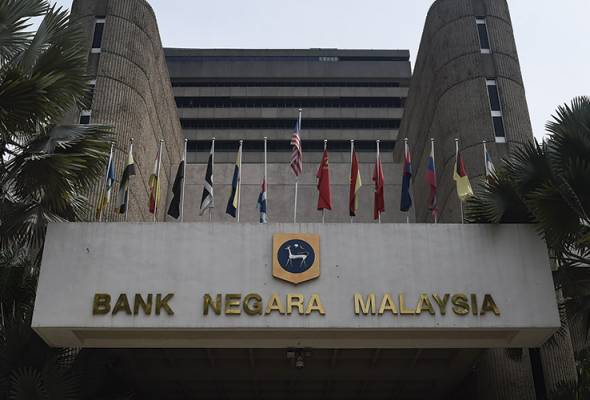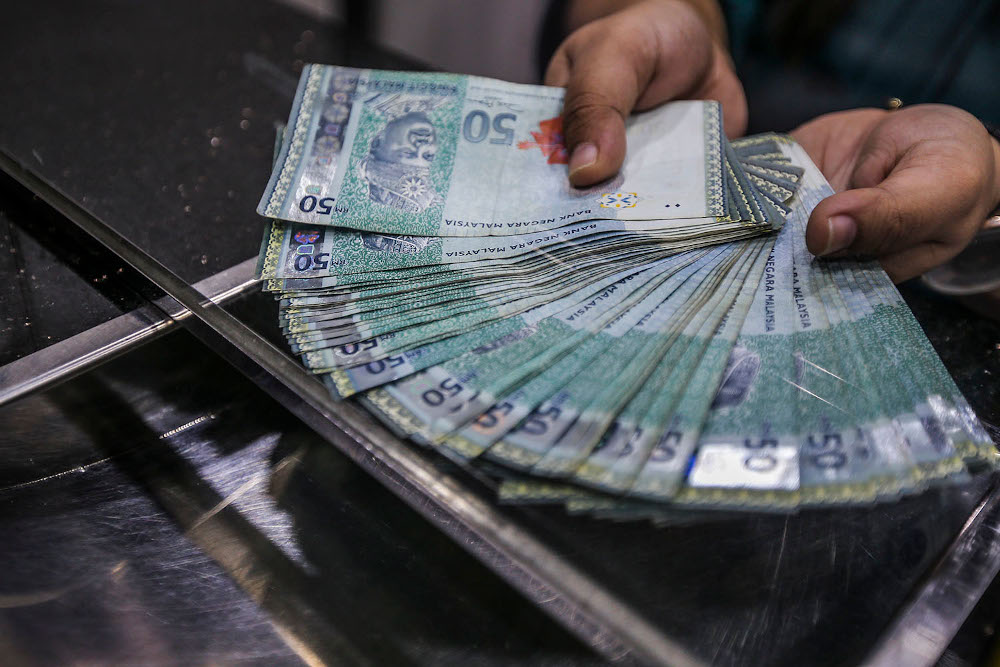
Published in Astro Awani, Focus Malaysia & Business Today, image by Astro Awani.
Bank Negara’s Monetary Policy Committee (MPC), an autonomous body within the central bank, has in its latest monetary policy statement on May 6 decided to maintain the country’s official interest rate known as the Overnight Policy Rate (OPR) at 1.75 per cent – that has a “knock-on” or transmission effect on our KL Inter-Bank Offered Rate (Klibor), i.e., lending and borrowing transactions between the banks to fulfil liquidity requirements (a hangover from the gold standard era).
In some countries like the UK and US, it’s known as the bank/base rate and federal funds rate, respectively. Whereas in Singapore, there’s no official interest rate and it’s left to market forces in the form of the domestic Singapore Overnight Rate Average (Sora) which is equivalent to Klibor.
Monetary policy, i.e., matters to do with the stability and purchasing power of the currency and management of the creation and supply of money in the economy is under the purview of the central bank. Bank Negara’s concerned is with inflation and price stability – which broadly reflects the policy goal of many central banks round the world.
Interest rate targeting became the norm when central banks found it virtually impossible to target the “money supply” in circulation. That is, creation of money is demand driven/determined (endogenously or horizontally, i.e., within the circuits and conduits of the real economy itself) and not supply-driven/determined (exogenously or vertically, i.e., from the central bank).
The money multiplier – M (money supply) = m (multiplier) x MB (monetary base) – in the standard textbooks, as a hangover from the gold standard, is practically inapplicable in the age of fiat currencies. The money multiplier simply means that the central bank can manipulate the supply of loans by adjusting the required reserve ratio (RRR) or the statutory reserve requirement (SRR) as in the case of Bank Negara.
Ironically, trying to doing so meant that the central bank would lose control over the policy interest rate and hence, by default, monetary policy. Which is precisely implicit in the Monetary Authority of Singapore (Mas)’s policy approach to anchor price and inflation stability in using the exchange-rate mechanism (in the form of the “nominal effective exchange rate” or NEER which is set against an undisclosed basket of currencies) instead. What it means is that the appreciation or depreciation of the Singapore dollar within a fixed band (upward ceiling and downward floor for exchange-rate fluctuations) determines price and inflation expectations.
Bank Negara has done a very brilliant job over the decades in managing monetary policy and the latest announcement concerning the OPR is a continuation of the decision-making style and character of the technocrats in the MPC whose mandate comes under the Central Bank Act (2009) and currently comprises eight members as of Jan 2021 with the latest appointment being Nor Zahidi Alias who was the Chief Economist of the Malaysian Rating Corporation Berhad (MARC).
However, it’s opined that the MPC can afford to further lower the OPR to e.g., 1.50 per cent.
This isn’t about signalling to the economy to influence expectations with the aim of boosting business confidence per se (i.e., on its own) only, but also practically about capitalising on the generally low inflation climate. In other words, there’s no threat or spectre of continuous rise in prices on the horizon.
As stated in the MPC’s statement: “Headline inflation in 2021 is projected to average higher between 2.5% and 4.0%, primarily due to the cost-push factor of higher global oil prices. In terms of trajectory, headline inflation is anticipated to temporarily spike in the second quarter of 2021, due particularly to the lower base from the low domestic retail fuel prices in the corresponding quarter of 2020. However, this will be transitory as headline inflation is projected to moderate thereafter as this base effect dissipates. Underlying inflation, as measured by core inflation, is expected to remain subdued, averaging between 0.5% and 1.5% for the year, amid continued spare capacity in the economy”
This is supported by AmBank Research’s latest economics report: “While inflation is expected to spike in 2Q21, it should stabilise thereafter. Higher inflation would primarily come from the cost side of the equation. Inflation is projected around 3.0% –3.5%”.
It’s critical for borrowing costs to be kept lower still amidst the on-going uncertainty over the Covid-19 epidemic aligned to the slow progress in implementation of the vaccine rollout, and the lack of short- to medium-term danger or downside from inflationary pressure.
Much lower borrowing costs should spur a higher gross fixed capital formation (GFCF), i.e., investment in and acquisition of production inputs/assets (machineries, equipment), thus helping to narrow the “output gap” (which measures actual and potential spare capacity in the economy) and boosts our output and employment levels as expressed in the IHS Markit Malaysia Manufacturing Purchasing Managers’ Index (PMI).
And as the “Cambridge Capital Controversy” – recently “resurrected” by Paul Krugman in his article in the New York Times last month (April 24, 2021) entitled, “The Woman Who Shattered the Myth of the Free Market” – intriguingly illustrated, a higher profit rate (enabled by a lower interest rate environment, among others with the other one being fiscal policy/fiscal deficit to allow for sustained borrowing) will in turn encourage more investment into production inputs/assets including hiring more workers that’ll in turn boost spending, consumption and aggregate demand in the economy.
And not the other way around, that is, we can’t expect to be beholden to the external environment (i.e., “market forces”) to “determine” domestic demand as a whole (producer and consumer). A lower interest rate – the “minimum possible” – should be able to “capture” more units and households in the economy and also even provide stronger support for fiscal policy (government spending and revenue) in the benchmarking of longer-term bond yields of the Malaysian Government Securities (MGS) and Malaysian Government Investment Issues (MGII), including sukuk, for example.
All of this on the assumption that Bank Negara is indeed a consolidated arm of the government and operating on the basis of at least the most basic coordination between monetary and fiscal policies
To be sure, monetary policy by itself would not suffice as business and investor confidence is practically dependent on projection of sales. Fiscal policy has to openly and unabashedly guide and determine monetary policy, at least for the duration of the epidemic’s outbreak. The short to medium-term stimulus packages should be complemented and supplemented by a lower interest rate framework on a long(er)-term basis.
A lower interest framework with fiscal injections as the initial impetus will allow for that fiscal policy-to-monetary policy transmission of chain-effect whereby positive impact of the former can be channelled to the latter to then take over “from there”. The Keynesian multiplier effect in boosting business sentiment will also thereby encourage both new borrowings by businesses, including our hard-hit small-and-medium-sized enterprises (SMEs), whilst enabling existing loans to be serviced on a lower cost basis.
It will also relieve the government of its fiscal burden and allow for fiscal consolidation in the medium to long-term – as the private sector and households increase their spending in the economy.
Given the on-going impact of the previous movement control order (MCO 1.0 & 2.0) especially on our SMEs, high rate of youth underemployment and unemployment estimated now to be four times the size of the national figure standing at 4.7% in March (coupled with lack of a sustained inflationary momentum resulting in “overheating”), there’s still room for the MPC to cut the OPR further.
In an article on “Unemployment among Malaysia’s Youth: Structural Trends and Current Challenges” in Perspective (Iseas/Yusof Ishak Institute, June 18, 2020) by Dr Lee Hwok Aun, “[t]he ratio of youth unemployment to the national average has been rising over the past decade”. It’s important, therefore, for there to be a (sustained and longer) lower interest rate environment to be a catalyst for investment in high-skilled jobs and, therefore, high(er) wages for our youth, including forging a new generation of tech agropreneurs and smart farmers, etc.
Overall, it’ll help support our country’s push towards a high-income nation on a more equitable basis per capita in reality.
Jason Loh Seong Wei is Head of Social, Law & Human Rights at EMIR Research, an independent think tank focussed on strategic policy recommendations based on rigorous research.

